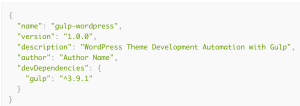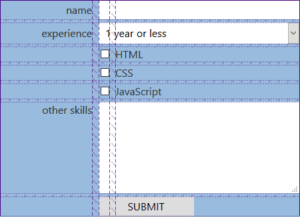Jeff Nolan founded his Ontario based firm in 1995, after working for a start-up ISP in the previous year.
Having little experience in running a business, Jeff applied for a program called the Business Advisory Center. All applicants were required to submit a business plan and sales projects which were then graded and judged. Jeff’s was one of the lucky 17 that were chosen!
After graduating in February of 1995, aged 21, and with less than a thousand dollars to his name and a PC borrowed from a friend, he started Imagination Plus.
Cold Call Rejection can Pay Off Big!
Cold calling. It’s probably the most dreaded of all marketing tools, but it can also be the most effective if it’s executed correctly.
In 1997 Jeff hired a sales person, and worked alongside that person as they embarked on a cold calling campaign that netted the business 35 new customers that very year. How did they do it?
"When I first started cold calling, I would locate suitable prospects using the local phone book. I always researched the company to find out who’s in charge, what they sold, and whether or not they had a Website. I usually compiled a list of reasons why they could benefit from my services, and I always tried to relate those reasons back to either saving money, or making it.
"During the first few weeks of cold calling, I must’ve sounded like a complete idiot, because I didn’t get much of a response. But as the weeks went by I became more comfortable with the concept, and developed confidence in what I was trying to achieve. I believe that was one of the reasons why the response rate improved," Jeff notes.
After a few weeks, one out of every ten calls was turning into a lead, and one of every four leads was turning into a sale. Here’s how Jeff did it.
"I would call the company and ask to speak with so-and-so — always referring to the person by their first name only. When the person finally answered the call, I’d introduce myself and ask when the last Website project was completed. The next question usually involved probing to find out if, and when, any site upgrades were planned. Next I’d refer to the list that I’d compiled prior to the call, and explain, very briefly, what I had to offer.
"The conversation would usually wind down naturally, and I’d ask if it would be possible for me to send a preliminary estimate, or a pack of information about the company. I’d always schedule a call back within 4 weeks, just to check up on the prospect — unless of course they wanted a proposal or a meeting."
Jeff’s Top 5 Tips for Cold Calling
- Do your research before you call, and find out who has the authority to OK a Website design project and/or budget. You can sell yourself to the company janitor, but it won’t do you any good.
a) you begin to uncover their needs, and
b) the call becomes more personal to the prospect.
Magazine Ads – Lots of Leads …And Some Conversions!
The following year, Jeff began to place ads in the local business magazine and full page, full color ads inside the back cover of the local Chamber of Commerce membership directory. "The Ads themselves weren’t directly responsible for sales, but did help to boost the firm’s name recognition. Print advertising is expensive and, in my humble opinion, only adds value if you commit for the long term," notes Jeff.
He did, however, have one pri advertising "hit" with an ad in a Canada-wide marketing and sales magazine named "Sales and Promotion". In that magazine, subscribers could send in reader-response cards requesting information about the products and services offered by selected sponsors. Jeff’s firm was the only one listed in the Internet & Web services category.
Each month, the magazine would collect the reader response requests and send these to Jeff for follow-up. The quarter-page ad cost about $800 per month, and generated a response list of approximately 120 leads per month, at an average cost of six or seven dollars each. And these prospects were qualified — they were interested in receiving more information.
"I ran the Ad for about 3 months and picked up roughly 15 or 16 clients as a result. One of these was a highly visible government organization which engaged my consulting services to the tune of just under $10,000. In my view, the ad paid for itself," says Jeff.
Direct Mail – Letters that Stand Out
In 2000, Jeff experimented with a direct mailer involving a fun-themed letter accompanied by candy, sent in a hand addressed bubble-pack envelope. The campaign boasted a 30%+ response rate, but was cut short because of the anthrax incident that involved the U.S. Postal service.
The concept was simple: send a fun letter with a package of candy and you’ll be remembered. After all, who could forget receiving a package of candy in the mail? Everyone loves candy, right? The mailer included a very brief letter, featuring key selling points in a bulleted list, accompanied by a package of candy.
The entire mailer comprised a bubble-pack envelope (which was less likely to be identified as typical junk mail and thrown away), that had been hand addressed directly to the president or C.E.O. of the prospective company. The theme and headline of the letter related to the type of candy enclosed in the package. Here’s a couple of example headlines and candy features that were used in various mailers:
Selling Website design services and the company in general
A package of Bonkers candy was included with this letter feature the headline: "Just a quick note to let you know that you’ll go BONKERS! When you see how the following services will help YOUR business…"
Selling the Company’s main service offerings
A huge gummy-foot was sent with this letter which read: "Now that I have my FOOT in the door. Are you looking for someone to take care of your Website?"
Selling Website maintenance services
A 6 inch giant-gummy tongue accompanied a letter that read: "Are you tired of just a lick and a promise when it comes to Website maintenance? With Imagination Plus your updates are guaranteed by the next business day!"
The letter never required a customer to take action. It was simply designed to get their attention, so that when Jeff followed up with a phone call, his brand would be remembered. Often the conversation would start with a laugh or two, which was a great ice-breaker. 30% of all recipients ended up booking for a sales appointment!
Freelance Exchanges – Cheap Leads
After growing his business to 6 employees, Jeff decided to sell a 51% stake in late 2001 and move to Chicago, where his wife had recently been transferred for work. He initially worked for another Web development firm, before deciding to start it all over again. He licensed the old brand name from the Ontario company he’d started (and of which he still owned 49%), along with the rights to their portfolio and client references.
Because he had to start out on his own again, his marketing in Chicago had to be dirt cheap and very effective. He chose to work with online marketplaces like eLance and QWestDex, which he decided to mine for leads using an arsenal of ready-to-send letters.
At these online marketplaces, buyers post the details of their project to the site, and service providers submit bids for the work. Competition is tough, though — I believe eLance has over two thousand registered service providers in the Web development category.
Because Jeff is licensed to use the Canadia firm’s corporate identity and portfolio, he’s able to provide prospective clients with dozens of examples of past work.
"I’m relying on my experience and professionalism to set me apart from the crowd. If you’ve spent any time reading bid responses on eLance and similar marketplaces, you’ll quickly notice that most service providers rely on price to sell, rather than the quality of their bid response.
"I have over five years of experience interacting with clients the traditional way, and I believe this gives me an advantage over competing service providers. I can give prospective clients peace-of-mind — they know they’ll be hiring a seasoned professional who knows how to manage and develop a relationship outside the online world," notes Jeff.
Jeff looks for the following before bidding on any project:
- Minimum budget of $5000
- Detailed descriptions of what the buyer needs
- The company must be a traditional bricks-and-mortar retailer. Jeff avoids pure dot com projects such as online dating services, online auction sites and casinos.
His success so far has been good, and he plans to further his reach by experimenting with other marketplaces, and hiring someone to help out with marketing the business. For Jeff and Imagination Plus, the future’s looking good!
 Matt Mickiewicz
Matt MickiewiczMatt is the co-founder of SitePoint, 99designs and Flippa. He lives in Vancouver, Canada.




